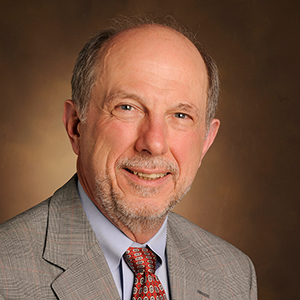Bonding over biochemistry
How did I become a biochemist? I was not one of those kids who played with a chemistry set or dissected frogs. But I did like chemistry. I spent the summer after my sophomore year of college in Harry Broquist’s lab at the University of Illinois, and since then I never have wanted to be anything else.
Chemistry was so cool when applied to life. I got my Ph.D. and tried to become a complete biochemist, mastering a number of areas. After starting my own lab as an enzymologist in the biochemistry department at Vanderbilt University, I joined the American Society for Biological Chemistry (now the American Society for Biochemistry and Molecular Biology) in 1978. At that time, membership was pretty selective, but I had a couple of JBC papers published on my own and got in.
The ASBMB sponsors many activities that are important to biochemists and to the scientific community as a whole. One of the most important is scientific publishing.
The Journal of Biological Chemistry, founded in 1905, actually predates the ASBMB by a year. I was privileged to serve as a JBC editorial board member for 18 years. I remember my first day on the board — three manuscripts for review (all from different associate editors) arrived in the mail (yes, they came by mail then, always in recognizable green and white envelopes). Since 2006, I have been an associate editor, and I’ve served twice as interim editor-in-chief.
Why would anyone want to do these things? It has been rewarding to be a part of a journal that has published so many seminal papers and continues to be a leader in scientific publication. The emphasis is always on quality. JBC was the first journal in the field to go electronic and also has been a leader with its emphasis on data integrity, which I became very involved in. I still get excited about publishing my own papers in JBC (and my lab has also published in Molecular & Cellular Proteomics and the Journal of Lipid Research, the other two ASBMB journals).
I also had the honor of working with and knowing Herbert Tabor, who served as editor-in-chief of JBC for almost 40 years and gave so much to the journal and the society. Knowing biochemists like Herb is priceless.
I have gone to most of the ASBMB annual meetings. It is great to meet old friends — and make new ones. Our lab at Vanderbilt is called the Dogs — just like some athletic teams — and I always try to organize a “Dog Dinner” of our alumni who are at the meeting and those living in the area. I think of my lab as a fraternity that people spend some time in and always remember — you can check out but never really leave. Indeed, I could extend that analogy to the whole field of biochemistry.
I’ve been privileged to meet and work with many fine people, including the staff at the ASBMB. I doubt if many people outside the ASBMB staff know this, but about a dozen of my large landscape and nature photographs hang on the walls in their office. I am grateful that I could in some way help pay them back for all of their efforts, providing something to brighten a day now and then. If you ever get to the office, check them out.
Biochemistry is great because if you learn and understand it, you can apply it to almost any kind of science — I’ve done that in pharmacology, toxicology, endocrinology and other things. It all comes back to knowing biochemistry. I was elated to be named an ASBMB fellow last year, and every biochemist or other biochemically minded scientist should be an ASBMB member and be involved in its programs. It’s great to bond with other biochemists.
Enjoy reading ASBMB Today?
Become a member to receive the print edition four times a year and the digital edition monthly.
Learn moreGet the latest from ASBMB Today
Enter your email address, and we’ll send you a weekly email with recent articles, interviews and more.
Latest in Opinions
Opinions highlights or most popular articles

Sketching, scribbling and scicomm
Graduate student Ari Paiz describes how her love of science and art blend to make her an effective science communicator.

Embrace your neurodivergence and flourish in college
This guide offers practical advice on setting yourself up for success — learn how to leverage campus resources, work with professors and embrace your strengths.

Survival tools for a neurodivergent brain in academia
Working in academia is hard, and being neurodivergent makes it harder. Here are a few tools that may help, from a Ph.D. student with ADHD.

Hidden strengths of an autistic scientist
Navigating the world of scientific research as an autistic scientist comes with unique challenges —microaggressions, communication hurdles and the constant pressure to conform to social norms, postbaccalaureate student Taylor Stolberg writes.

Black excellence in biotech: Shaping the future of an industry
This Black History Month, we highlight the impact of DEI initiatives, trailblazing scientists and industry leaders working to create a more inclusive and scientific community. Discover how you can be part of the movement.

Attend ASBMB’s career and education fair
Attending the ASBMB career and education fair is a great way to explore new opportunities, make valuable connections and gain insights into potential career paths.

